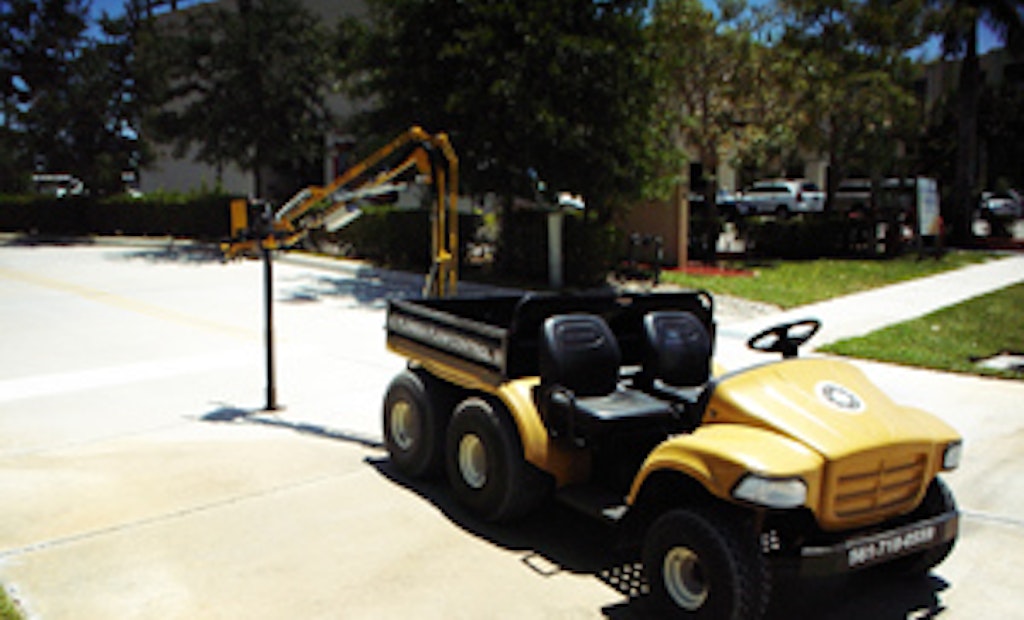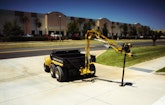
Interested in Location/Detection?
Get Location/Detection articles, news and videos right in your inbox! Sign up now.
Location/Detection + Get AlertsLooking to broaden services, build new business, increase productivity and protect employees, the owners of Florida Flow Control in Wellington, Fla., decided to try a valve exercising system.
“The majority of our jobs are municipal work, with a primary emphasis on valve installations, wet taps, line stops, lift-station rehabs, flow monitoring and other water and sewer testing services,” says Felipe Lofaso, business manager.
“But to create more volume for our business, we wanted to be a full turnkey operation, and valve exercising is a logical extension of our existing services. It just made sense, since we already had the manpower and the expertise.”
Simple operation
The company bought a Spin Doctor valve exerciser from Hurco Technologies in June 2010. The system slides into a standard-sized hitch receiver on light-duty vehicles. It has a boom that is double-articulated, at the base and in the middle. This allows the boom to rotate up to 270 degrees around the vehicle, so that the truck does not have to be aligned exactly to reach the valve. The boom extends up to 13 feet.
“We usually mount it on a utility vehicle,” Lofaso says. “That’s how we used it when we did work at an amusement park, which has a lot of narrow areas where you can’t use a truck. When we work out in the streets, we mount it on a larger pickup truck. We can even mount it on a vacuum truck. Two guys can switch it out. It only takes about 10 minutes to dismount and remount.”
A hydraulically powered, variable-torque control allows the operator to run the unit at the lowest power level required, reducing the risk of damage to valves and the key and helping to keep operators safe as well. A gauge measures and an LED readout displays the torque being applied and the number of revolutions.
“Everything is programmed by computer, so there’s little chance for error,” Lofaso says. “It even figures out how much torque to apply, and torque-limit settings prevent stripping. It’s usually set at about 150 pounds, which limits the potential for valve breakage.”
The long articulated boom comes in handy for valves in hard-to-access spots. If a valve is located away from a street and over a berm, for example, the operator can extend the boom and exercise it.
More efficient
Before the company bought the exerciser, crews exercised valves manually, which is strenuous and time-consuming and can lead to back strains and repetitive-motion injuries. It took about 20 minutes on average to exercise each valve, and longer if the valve was frozen.
“The guys got pretty tired doing it,” Lofaso says. “Now we have days where we do up to 50 valves a day. Demand for the service is on and off, but when we’re in full swing, the Spin Doctor increases our net profitability by 50 percent. It’s a very valuable piece of equipment for us. When we use the device, it covers our overhead cost for the day, so everything else we do with a secondary crew is pure profit. It increases our margins and productivity.”
One-stop shop
Adding services makes Florida Flow more of a one-stop shop, giving the company a better chance at winning bids: Most municipalities would rather hire one contractor and pay just one invoice.
“While we’re exercising valves, we can do a line stop if there’s an on-site break,” Lofaso says. “If, say, an 8-inch line breaks, the municipality doesn’t have to jump into emergency mode. We can react very quickly and repair it.”
Lofaso sees potential for winning annual contracts to exercise valves for municipalities, which are required by a federal mandate to exercise valves regularly – about once a year. There’s a strong incentive to do so because knowing where valves are and whether they are functioning improves their fire insurance ratings, he says.
“Not every municipality does a regimented review,” he says. “So once we really ramp up, we feel confident that annual contracts will be a large part of our business. The equipment has definitely paid for itself and then some. If the work is there, it’s a fantastic investment.”







